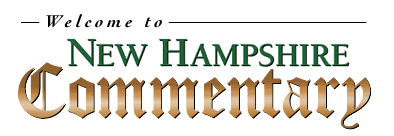

Thanksgiving; Lest We Forget
Although I have made my home in Pennsylvania for several years, that does not mean I have forgotten my native New England where I grew up. My thoughts often drift back there, especially at Thanksgiving time when I become keenly aware of my pilgrim heritage.
To think, it is three hundred and eighty-four* years since that small band of people sailing from Plymouth, England on the Mayflower arrived on the shores of Cape Cod. Among that group 41 had already left England in 1609 to live in exile in The Netherlands to avoid persecution, as their “separatist” form of religion did not conform to that prescribed by the King and Church of England.
Still desiring to preserve their English culture and language, they thought it time to leave and find a place where they could accomplish this and still be free. They decided to try the New World and left Delft harbor in July 1620 to join two vessels they had hired for their journey, the Mayflower and Speedwell, at Southampton, England. There they sought financial backing from investors and a patent for land in “Northern Virginia”. Additional settlers, their families and servants, and hired help augmented the original party of pilgrims from Leiden, Holland. Once at sea, the Speedwell proved not to be seaworthy and was abandoned at Plymouth, England. After regrouping, leaving some behind, 102 passengers boarded the Mayflower and they departed Plymouth September 6, 1620, leaving their homeland for 66 days of rough passage across the Atlantic towards an uncertain fate.
 The Mayflower in mid-Atlantic, where the main beam
cracked.
The Mayflower in mid-Atlantic, where the main beam
cracked.
As the Mayflower drew close to the desolate coast of Cape Cod, so named and charted by Capt. John Smith who had explored the eastern seaboard, it became evident they had not arrived at northern Virginia, but much farther north. Disputes took place when trying to decide if they would stay or go on. To ensure a peaceful resolution to the problem at hand, the leaders of the group drew up the historic “Mayflower Compact” for all the men of majority age to sign if they so desired. This agreement set forth the fundamental rules by which they would abide in their new settlement. The Englishmen had brought with them the basic structure of English rule of law. The Compact would serve as their guide during those early years of Plymouth Colony.
After exploring the tip of the Cape at what is now Provincetown, Massachusetts, they went along the harbor north of the Cape, where it was decided to settle in an area near a brook, naming their plantation “New Plimoth.”
Having arrived in New England in November, they did not receive a “warm” reception by a welcoming committee offering food and shelter. They had expected to encounter Indians, but it would awhile before they came upon “Squanto”, a survivor of the recent smallpox epidemic that had decimated his tribe. Squanto, once a captive of the English, was taken to Europe, but he escaped after many adventures, and he spoke English! He was most helpful to the pilgrims, teaching them how to survive in their new surroundings, and by introducing them to Massasoit, the Wampanoag Chief.
Already deprived of adequate nourishment, being low on supplies and unable to build shelter right away, they had to continue living aboard ship. Winter was soon upon them and a “general sickness” spread among most. By spring, half of them had died, leaving only four adult women, seven young girls, the remaining being men and young boys. Few couples survived – mostly widowers, widows, and orphans.
It would be only this small nucleus of pilgrims, augmented by 258 others arriving on six vessels between 1620 and 1630, which would sustain Plymouth Colony for a decade. Without the aid of the local Indians, with whom they concluded a Treaty and made payment for land usage, they would have soon perished. The Treaty and peace lasted 50 years, never broken during the lifetime of Governor William Bradford and Massasoit.
When William Penn arrived from England to settle his land that was to become Pennsylvania, he followed the example of those pilgrims, as he successfully established a peaceful colony through fair treatment of the local Indians. Philadelphia, “The City of Brotherly Love,” became the cradle of America’s “Declaration of Independence” from the English King George III, the writing of our Bill of Rights and Constitution drawn up by the Founding Fathers, undoubtedly inspired by the words and wisdom of the pilgrim’s Mayflower Compact. Independence Hall and the Liberty Bell all became symbols of Democracy and the quest for everlasting freedom for our Nation.
The pilgrims were first to realize that power stems not from a king or dictator, but from the people themselves. Government by the consent of the People is the great idea we as a nation inherited from the Pilgrim Fathers.
There is a Latin inscription on the Pilgrim Statue in Philadelphia. Let us be forever mindful of those words, not just at Thanksgiving, but always. Lest we forget!
“What the Fathers have achieved with the greatest difficulty, do not shamefully abandon.”
c c c
By Janet Springer, assistant chair, Public Relations, General Society of Mayflower Descendants, in collaboration with: Dorothy Seabury Hornus chair, public relations, General Society of Mayflower Descendents, Plymouth Massachuetts.
Original art by Mike Haywood provided by the General Society of Mayflower Descendants.
*Submitted: Thanksgiving, 2004
Return to NH Commentary Home Page
© 2004 NH Commentary
P.O. Box 706
Concord, NH 03302